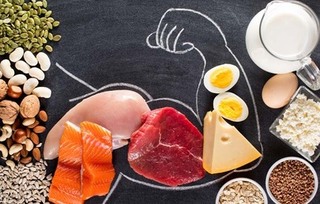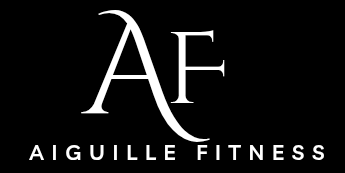Strength training also known as resistance training is a cornerstone of fitness, but one common question many beginners ask is: “Will strength training build muscle?” Understanding the relationship between strength and muscle growth is crucial to designing an effective workout plan that aligns with your goals. In this blog, we’ll break down the science behind training for strength and muscle building, the differences in training styles, and how to structure your workouts for both strength and hypertrophy.
Understanding Strength vs. Muscle Growth
To answer the main question, let’s first define the two key terms:
Resistance training focuses on increasing the amount of force your muscles can produce. This is often measured in your ability to lift heavier weights over time.
Muscle hypertrophy refers to the process of increasing the size of muscle fibers, which results in larger and more defined muscles.
While these two concepts are closely linked, they are not identical. Training for power does build muscle, but the extent to which it does depends on how you train.
The Science Behind Strength Training and Muscle Growth
Muscle growth and strength development occur due to a combination of mechanical tension, metabolic stress, and muscle damage. However, the way you train determines whether your body prioritizes energy gains, muscle size, or both.
How Strength Workout Builds Muscle
Progressive Overload
This training involves lifting progressively heavier weights, which forces the muscles to adapt by becoming stronger and sometimes larger.
Neuromuscular Adaptations
Power-focused training improves the efficiency of your nervous system, allowing your body to recruit more muscle fibers when lifting. This leads to an increase in energy without necessarily increasing muscle size significantly.
Myofibrillar Hypertrophy vs. Sarcoplasmic Hypertrophy
Myofibrillar Hypertrophy: Increases the density of muscle fibers, leading to energy gains with modest muscle size increases.
Sarcoplasmic Hypertrophy: Increases the fluid and energy stores within muscle cells, leading to greater muscle volume but less direct strength gain.

Strength Workout vs. Hypertrophy Workout: Key Differences
Strength Workout (Lower Rep, Higher Load)
Reps & Sets: 3-6 reps per set, 3-5 sets per exercise
Weight: 85-100% of one-rep max (1RM)
Rest Periods: 2-5 minutes for full recovery
Goal: Maximize force output and increase overall strength
Muscle Growth?: Yes, but primarily through myofibrillar hypertrophy (denser, stronger muscles without significant size increase)
Hypertrophy Workout (Moderate Rep, Moderate Load)
Reps & Sets: 6-12 reps per set, 3-4 sets per exercise
Weight: 65-80% of 1RM
Rest Periods: 30-90 seconds to maintain metabolic stress
Goal: Maximize muscle size and endurance
Muscle Growth?: Yes, primarily through sarcoplasmic hypertrophy (larger muscle volume)
Can You Train for Both Power and Size?
Yes! Many lifters aim for a balance between power and muscle growth. To achieve this, a periodized training approach is recommended, which involves cycling between strength and hypertrophy phases.
Example Strength & Hypertrophy Hybrid Routine
Day 1 (Power Focus): Heavy Squats, Deadlifts, Bench Press (3-5 reps, 4 sets)
Day 2 (Hypertrophy Focus): Moderate-weight Leg Press, Dumbbell Bench Press, Lat Pulldowns (8-12 reps, 3-4 sets)
Day 3 (Power Focus): Heavy Overhead Press, Weighted Pull-ups, Romanian Deadlifts (3-5 reps, 4 sets)
Day 4 (Hypertrophy Focus): Machine Shoulder Press, Bicep Curls, Triceps Dips (8-12 reps, 3-4 sets)
This strategy ensures that you develop both strength and muscle size over time.

Nutrition for Strength and Muscle Growth
Your training is only one part of the equation. Proper nutrition is essential for muscle growth and strength gains. Here’s what you need to focus on:
Protein Intake
Aim for 1.6-2.2g of protein per kg of body weight per day.
Sources: Lean meats, fish, eggs, dairy, plant-based proteins.
Caloric Surplus or Maintenance
To build muscle, consume slightly more calories than you burn (caloric surplus).
For strength gains without weight gain, focus on calorie maintenance.
Carbohydrates and Fats
Carbs fuel your workouts and aid recovery.
Healthy fats support hormone production, including testosterone, which
Common Myths About Strength Training and Muscle Growth
Myth 1: “Lifting Heavy Always Makes You Bulky”
Resistance training alone does not lead to massive muscle gains unless combined with hypertrophy training and a high-calorie diet.
Myth 2: “More Reps Means More Muscle”
While moderate reps (6-12) are best for hypertrophy, high reps (15+) focus more on endurance rather than significant muscle growth.
Myth 3: “Training For Strength Doesn’t Help With Aesthetic Goals”
Training for resistance improves muscle density and definition, making you look lean and strong.
Final Verdict: Does Resistance Training Build Muscle?
Yes, resistance training does build muscle, but not as efficiently as hypertrophy-specific training. If your main goal is to increase muscle size, incorporating hypertrophy-focused exercises with higher reps and shorter rest periods will be more effective. However, if you want to be strong and muscular, combining both strength and hypertrophy training is the best approach.
Takeaway Points:
✅ Resistance training builds muscle, but mainly through myofibrillar hypertrophy.
✅ Hypertrophy training maximizes muscle volume and size.
✅ A combination of both training styles provides the best results.
✅ Proper nutrition is essential for muscle growth.
✅ Periodization and progressive overload help optimize results.
If you’re a beginner, start with a balanced approach—train for power and hypertrophy together while prioritizing proper form and recovery. Over time, you can adjust based on your specific goals. Keep lifting, stay consistent, and enjoy the journey toward building both strength and muscle!

